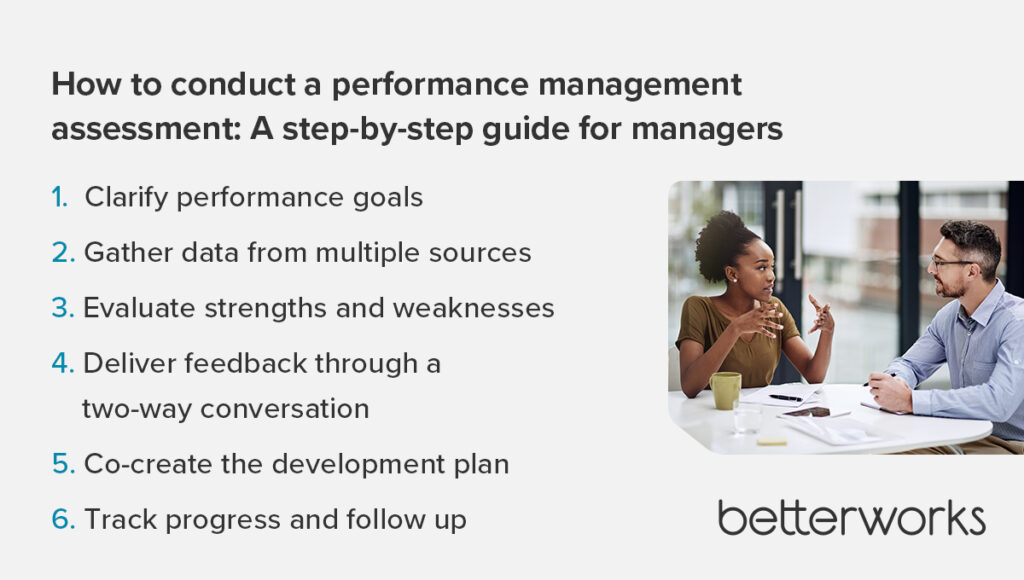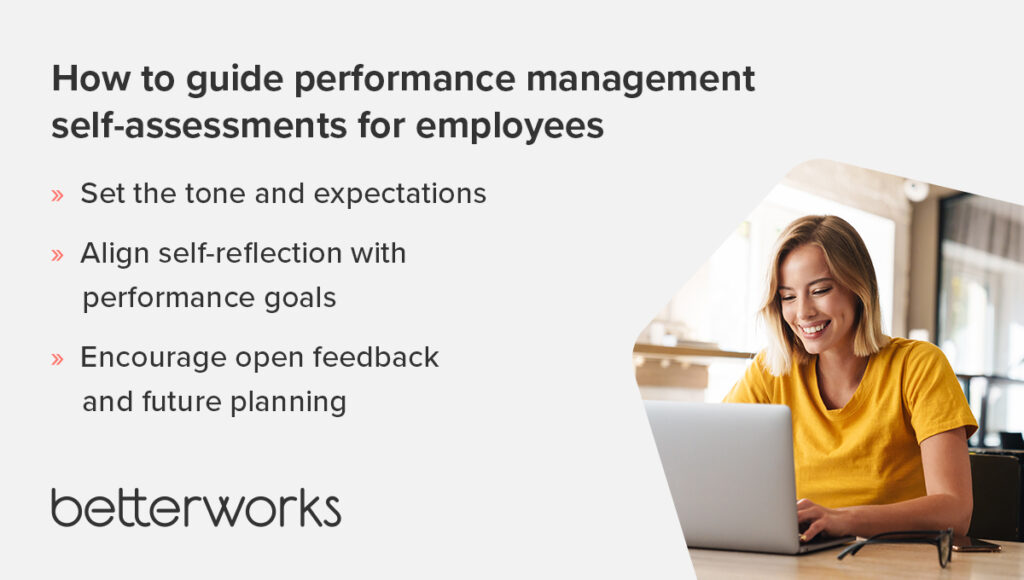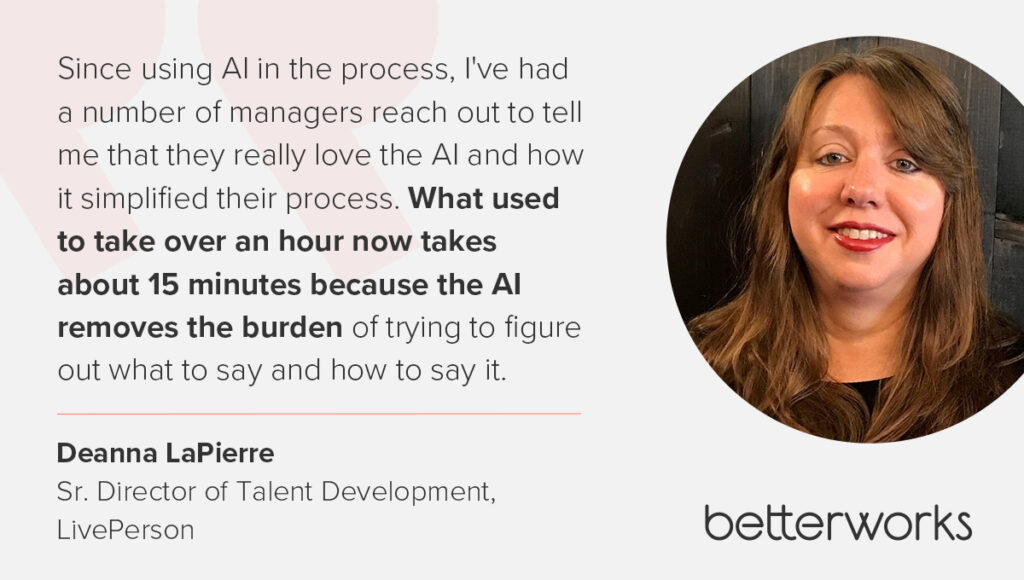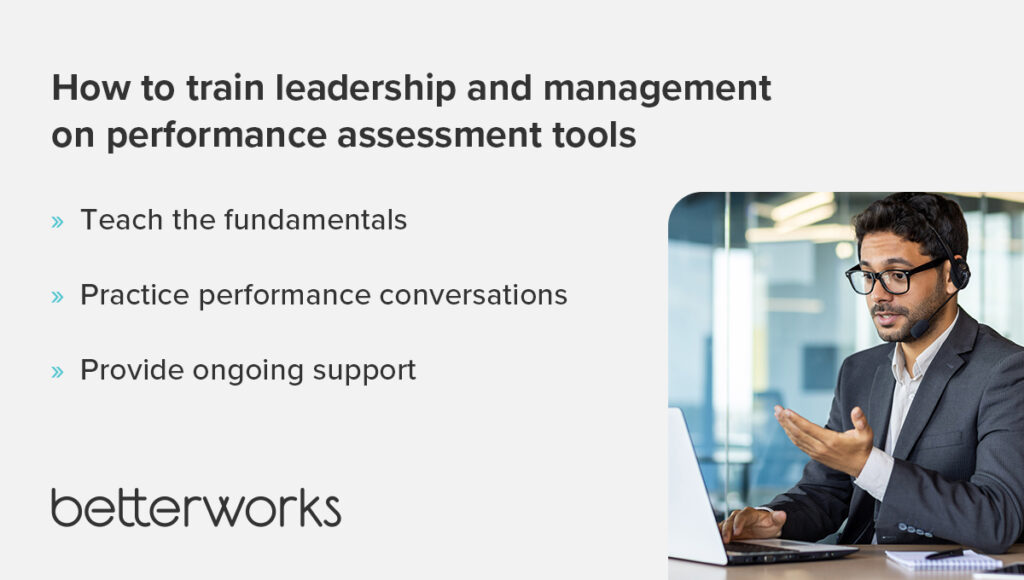- What is a performance management assessment?
- How to conduct a performance management assessment: A step-by-step guide for managers
- How to guide performance management self-assessments for employees
- 3 performance management assessment examples
- How to train leadership and management on performance assessment tools
- Make every performance assessment count
Done right, a performance management assessment can unlock potential. Done poorly, it can derail careers, damage morale, and push high performers out the door. These assessments aren’t just administrative—they’re personal.
And yet, far too many organizations still treat the assessment process as a formality rather than a strategic moment for connection and growth. According to our 2025 State of Performance Enablement report, half (51%) of employees don’t love – or even like – their organization’s performance management assessment process. That disconnect reveals an urgent need for HR leaders to rethink how assessments are structured, delivered, and experienced across the organization.
Learn how to evaluate employee performance effectively, guide self-assessments, and put performance evaluation best practices into action.
What is a performance management assessment?
A performance management assessment is the structured evaluation of an employee’s contributions, growth, and development over time. It’s a core part of the performance management process, helping you identify how individual performance aligns with business goals. It can also highlight team-wide trends, giving you insights into how well your performance review processes are working overall.
You might use a performance management assessment to:
- Evaluate performance against measurable goals
- Provide constructive feedback
- Support or adjust a development plan
- Understand communication skills and collaboration habits
- Recognize high performance and identify growth opportunities
Modern performance management software can make this process easier by streamlining the review process, capturing real-time feedback, and tracking progress toward goals.
How to conduct a performance management assessment: A step-by-step guide for managers
Conducting a strong performance management assessment starts with the right foundation. When done well, assessments not only improve individual performance – they also strengthen team alignment, support growth, and help managers become better coaches. By following performance evaluation best practices, you can ensure every review is fair, focused, and actionable. Check out our guide to help managers assess individual performance with clarity and consistency.
Step 1: Clarify performance goals
Before starting the assessment, revisit the employee’s performance goals and make sure they still reflect current priorities. Are the goals clear and measurable? Have priorities shifted since the last check-in? Managers and employees should take time to align on what success looks like for the review period.
This clarity is essential – not only for fairness but also for making the performance management assessment feel relevant. Betterworks makes it easy to keep goal setting visible and up to date throughout the year, so managers aren’t starting from scratch.
Step 2: Gather data from multiple sources
Good assessments are evidence-based. Relying on memory or isolated feedback opens the door to bias and blind spots. Collect data from a variety of sources, including project results, peer feedback, one-on-one meeting notes, and real-time input captured in your performance management software. Look at how the employee’s work has contributed to team outcomes and broader business goals. A more complete picture helps you deliver a more balanced and credible assessment.
Step 3: Evaluate strengths and weaknesses
With data in hand, assess the employee’s performance across core competencies. Consider areas like communication skills, technical knowledge, collaboration, initiative, and adaptability. What are their standout strengths? Where are the opportunities for improvement? Use a consistent assessment tool or rubric to compare performance fairly across team members. This step ensures that your performance management assessment is both individualized and equitable.
Step 4: Deliver feedback through a two-way conversation
A performance assessment should never feel like a lecture. Schedule time for a two-way discussion where the employee can share their perspective, ask questions, and clarify expectations. Keep the conversation focused on outcomes, growth, and shared goals. The most effective managers tie constructive feedback back to the employee’s goals and role impact. When both parties are engaged, the review process becomes more meaningful and productive.
Step 5: Co-create the development plan
Once you’ve discussed the assessment, shift the focus to what comes next. Use the conversation to create or update the employee’s development plan. What new skills or experiences will help them grow? What support do they need to improve? Align these next steps with their career goals and the company’s strategic direction. With Betterworks, managers can link feedback directly to development actions and track progress over time—turning insight into impact.
Step 6: Track progress and follow up
A performance management assessment is only the beginning. To make it effective, you need to follow through. Check in on progress regularly, adjust goals as needed, and celebrate wins along the way. Use your performance management software to keep development milestones and goals front and center. This creates accountability and helps employees see the connection between their efforts and their growth.

How to guide performance management self-assessments for employees
A thoughtful performance management self-assessment helps employees take ownership of their growth. These reflections encourage accountability and boost engagement while making the review process more collaborative and transparent.
When employees are given the opportunity to evaluate their own contributions, it deepens their understanding of expectations and reinforces alignment with company goals. Self-assessments also help managers gather insights that might not surface in traditional reviews.
Let’s walk through a few key steps for guiding employees through the self-assessment process effectively.
Set the tone and expectations
Start by explaining the purpose of the performance management self-assessment. It’s not a test; it’s a chance to reflect on wins, challenges, and progress. Set a positive tone that encourages honesty, not perfection. Providing a clear structure – such as a prompt-based template or simple assessment tool – can help employees organize their thoughts and approach the exercise with more confidence. Reinforce that the goal is learning, not evaluation. This helps employees feel safe enough to share meaningful insights that can shape future conversations and growth opportunities.
Align self-reflection with performance goals
Encourage employees to anchor their self-reflection in the performance goals they’ve been working toward. Ask them to consider what they accomplished, where they fell short, and what obstacles they navigated along the way. This keeps the self-assessment focused on measurable outcomes rather than subjective impressions.
With Betterworks, you can make those goals easily visible and accessible during the assessment process, which helps employees connect their reflections to real progress. Tying feedback to goals also gives managers a better context for coaching and performance appraisals.
Encourage open feedback and future planning
Beyond reflection, self-assessments are a valuable opportunity to discuss what comes next. Ask employees to share where they want to grow and what kind of support they need. These conversations lay the groundwork for more personalized development plans and more targeted feedback.
Framing self-assessments as forward-looking helps shift the narrative from judgment to growth, turning performance conversations into strategic career planning. With the right prompts and a consistent process, employees will feel more heard, more motivated, and more invested in their future.

3 performance management assessment examples
Use these examples to illustrate how different types of performance management assessments can work across your organization.
Example 1: Individual contributor assessment
An individual contributor assessment focuses on an employee’s overall performance. For example, a manager might assess how well an employee contributed to a product launch by reviewing project outcomes, peer feedback, and alignment with team goals. This type of performance management assessment is important because it connects individual performance to broader team impact and supports more accurate, fair performance appraisals.
Example 2: Management performance assessment
A management performance assessment evaluates leadership, team outcomes, and coaching effectiveness. For instance, a director might be assessed on how well they’ve supported team members in setting goals, achieving results, and developing professionally. This form of assessment helps identify whether managers are creating the conditions for high performance and if they’re equipped to lead effectively at scale.
Example 3: Self-assessment
A performance management self-assessment encourages employees at any level in the organization to reflect on their strengths and weaknesses, progress toward goals, and future development plans. For example, an employee might rate their communication skills and describe how they handled a recent challenge. Self-assessments build ownership, prepare employees for review conversations, and enrich the overall performance appraisal process.
How to train leadership and management on performance assessment tools
Even the best-designed performance management process will fall flat without skilled, confident managers to lead it. Your leadership team needs more than a checklist; they need the knowledge, tools, and support to assess performance fairly, consistently, and constructively. With the right training and resources, managers can turn assessments into opportunities for alignment, growth, and meaningful impact.
Betterworks gives you the platform to embed that training into everyday workflows, making it easier for managers to do the work—and do it well.
Teach the fundamentals
Start with the essentials. Help your managers understand what a high-quality performance assessment looks like. Provide performance review examples that are grounded in clear expectations, consistent evaluation criteria, and a focus on outcomes. Teach them how to align assessments with measurable goals, not vague impressions.
Emphasize the importance of consistency across teams to reduce bias and ensure fairness. Walk through examples of constructive feedback that ties directly to performance and impact. Betterworks makes this easier by connecting individual and team goals to organizational priorities, giving managers the visibility they need to assess performance in context.

Practice performance conversations
Knowing what to say and actually saying it are two different things. That’s why practicing performance conversations is key to building confidence. Use role-playing exercises to help managers navigate common scenarios: delivering difficult feedback, recognizing high performance, or guiding a development plan.
Practice sessions help managers get comfortable with the language of feedback, anticipate employee reactions, and stay focused on outcomes. Betterworks supports these efforts by offering built-in conversation templates and guidance that managers can use during real check-ins and performance reviews.
Provide ongoing support
Even experienced managers benefit from continued learning. Provide support that’s integrated into your performance management system, not something they have to hunt for. With Betterworks, you can embed coaching tips, reminders, and contextual help directly into the platform. This just-in-time support makes it easy to prompt the right behaviors at the right time—whether it’s preparing for a performance review, conducting a mid-cycle check-in, or refining a development plan.
You can also use the platform’s analytics to identify where additional training may be needed, ensuring managers get support before problems arise. AI-powered tools, like Betterworks Continuous Performance Management, also make the performance management assessment process easier and faster.
“Since using AI in the process, I’ve had a number of managers reach out to tell me that they really love the AI and how it simplified their process,” says Deanna LaPierre, senior director of talent development at LivePerson. “What used to take over an hour now takes about 15 minutes because the AI removes the burden of trying to figure out what to say and how to say it.”

Make every performance assessment count
A strong performance management assessment process helps employees and managers stay aligned, connected, and focused on growth. It supports high performance by turning feedback into action and conversations into momentum. By combining clear expectations, consistent evaluation, and the right assessment tools, you can create a performance management process that actually works – and that helps your people do their best work.
How Betterworks levels up performance management at LivePerson








